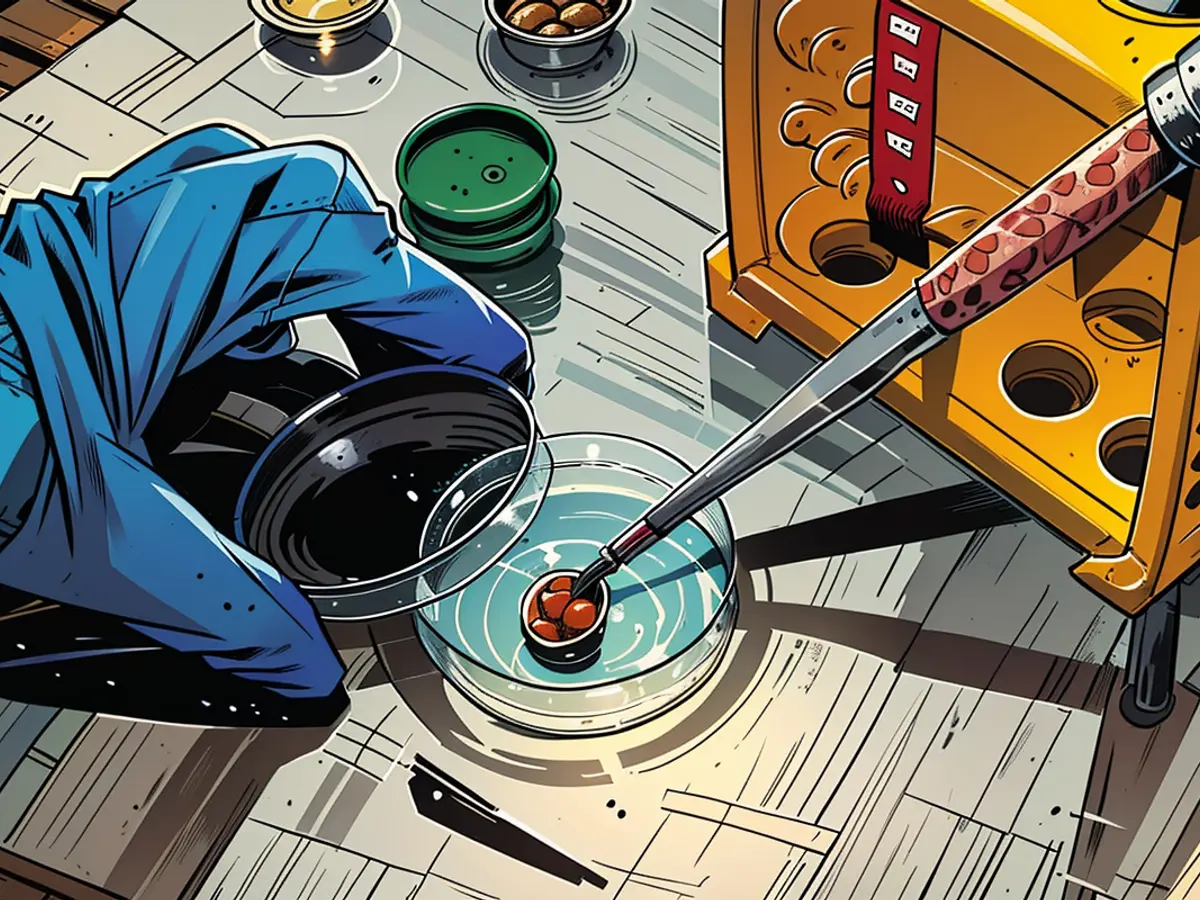New lab meat smells like real meat while cooking
Sparing Animals Suffering, Many Want To - Yet Few Would Give Up the Typical Smell and Taste of Meat. In Supermarkets, There Are Already Many Substitute Products, But Research Holds Great Hope for Lab-Grown Meat.
It looks like pink jelly wobbling, but smells like grilled beef when cooked: Researchers in South Korea have produced lab-grown meat that mimics the smell and taste of real meat. Their product performs better than other lab-grown meat, where appearance is often the focus, states the team in the journal "Nature Communications".
The researchers around Milae Lee and Woojin Choi from Yonsei University in South Korea used a hydrogel into which they incorporated a flavor compound. When heated above 150 degrees, their product releases certain aroma compounds - like real meat, whose constituents also react at high temperatures. Chemical analyses discovered similar taste patterns in both products.
Typical Aroma of Roasted, Fried and Baked
The newly developed substance mimics the Maillard reaction. In the reaction named after the chemist Louis Camille Maillard, amino acids and sugars, under the influence of heat, are converted into new compounds. The brown end-products, melanoidins named, are responsible for the typical aroma and color of roasted, fried, and baked foods.
It has been difficult to achieve the taste in lab tissue because the amino acids differ from those in regular meat, according to the study. Moreover, one cannot easily resort to synthetic flavor compounds from the food industry because they are volatile and may completely disappear during the long-term cell culture of lab meat. "Therefore, a material scientific approach to the production of aroma compounds during the cooking process is essential," they believe.
Off-Flavors: Fishy, Sharp and Sour
The South Korean researchers initially chose the aroma compound 2-Furfurylthiol for their experiments, which is not only found in cooked beef but also in roasted coffee. In another experiment, they added two more aroma compounds, one of which tastes and smells meaty and oniony, while the other reminds of fried nuts and roasted. Real meat contains several aroma compounds as well.
The three aroma compounds were introduced into Gelatine-Methacrylat, which is used for the formation of cross-linked hydrogels for tissue cultivation and 3D printing. The cell culture lasted for 15 days in the experiment.
From a temperature of 80 degrees, the lab meat already emitted a faint smell, which was very noticeable at 150 degrees. The following aromas were classified as pleasant: meaty, savory, nutty, roasted bread, floral, cheesy, fatty. On the other hand, fishy, sharp, and sour aromas were classified as off-flavors.
Not Yet Approved as Food
An electronic nose was used for the investigation, and the results were compared. The lab-grown meat that contained the most aroma compounds showed the greatest similarity to meat. Finally, the taste profile of real meat is complex, as stated in the study. Therefore, it is better to use more aroma compounds than the three used in the study in the future, as there are dozens in real meat.
The researchers point out that although the used methods are biocompatible, they have not been approved as food additives in the USA yet. "Nevertheless, the proposed aroma strategy has the potential to be implemented with food-grade chemicals," it is stated further. The study could contribute to generating better lab-grown meat.
"Lab-grown meat is developing into a new type of food that can sustainably provide animal protein," it continues. The researchers are convinced: "Taste is the most important sensory property determining the quality of meat."
The team from Yonsei University in South Korea believes that a material scientific approach to the production of aroma compounds during the cooking process is crucial to achieving the taste in lab-grown meat, as the amino acids in lab tissue differ from those in regular meat. Additionally, synthetic flavor compounds from the food industry may not work well due to their volatility and tendency to disappear during the long-term cell culture of lab meat.








